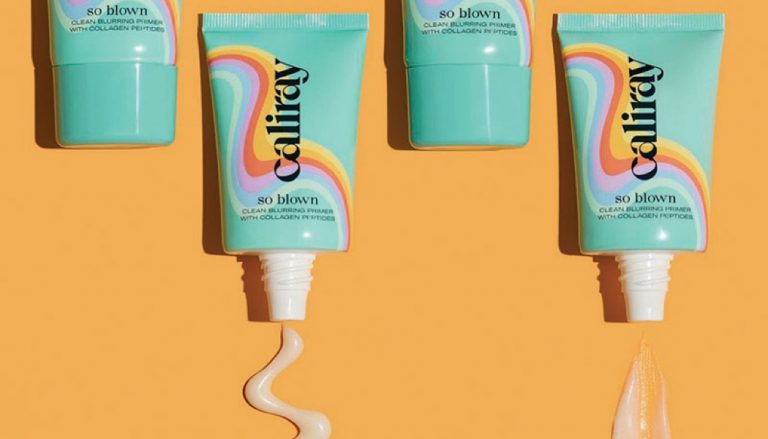Element Beauty Group has partnered with Oco, part of Canadian company Carbon Upcycling Technologies, to develop beauty packaging materials from captured CO2 and post-consumer recycled materials (PCR). The packaging, which was recently launched at Sephora in collaboration with California makeup brand Caliray, is stronger, more durable, more recyclable, and reduces greenhouse gas emissions by capturing the carbon contained within the packaging. Contributed.
Carbon waste + plastic waste
So is this waste integration the future of super-green cosmetics packaging? Premium Beauty News spoke to Nick Gardner, co-founder of Element Beauty Group, to find out more about captured carbon and waste. Combining plastics certainly “makes more sense” for industry, he said.
“A certain amount of energy is consumed. [carbon] The trapping process, so to speak, is only used to capture that CO2 (…) So using it on waste plastic is a very good use.” rather than mixing it with other packaging materials, Gardner said.
Captured carbon is now already incorporated into a wide range of materials, from virgin plastics to fragrances and even concrete, but the executive said that by mixing it into post-consumer recycled (PCR) materials for packaging, He said the impact on the environment would further increase.
“In general, plastic recycling rates in the beauty industry are very low,” he said. “…I thought, if this is going to end up in a landfill, wouldn’t it be better to effectively create a carbon trap? A ‘sink,’ so to speak. is. So we went ahead with it,” he said. “…We are producing better waste.”
But beyond this, Gardner says carbon-dense additives can enhance PCR beauty packaging for general use, making it more durable and easier to use than existing mechanical recycling methods when products are delivered to these centers. He said it would be more suitable for the system.
“We are trying to create a more efficient recycling stream and use that waste more efficiently.”
The future of carbon capture?
Gardner said carbon capture in its various forms remains a “very interesting industry” with promise. “I truly believe this is the future. If anything can be done about global warming, we need to remove and capture CO2. And of course methane.”
For Element Beauty, the source of captured carbon was important to this project, he said. Through its partnership with Oco, the company was using sequestered carbon from large power plants (emissions that would otherwise be released into the atmosphere) rather than CO2 already present in the atmosphere. Using a patented process, this CO2 was mixed with the inorganic raw material magnesium silicate to create a powder additive that can be incorporated into post-consumer recycled plastics.
Gardner said that while several feedstock compounds have been tested, magnesium silicate is the final choice because it is “very inert,” “readily available,” and can be produced cheaply in a non-intensive manner. Magnesium silicate was selected.
After about a year and a half of development, from ideation to final filling and testing, Element Beauty has launched a variety of beauty products that integrate 15-30% captured carbon, including mascaras, compacts, lip glosses, and tubes. Developed packaging options.
A classy challenge awaits
When asked how much industry interest there is in this type of packaging, Gardner said: “I think there are quite a few.”
However, he said there are still clear challenges to scaling up such packaging.
Gardner said that while carbon-capturing PCR materials can easily be “dropped in” into existing packaging manufacturing processes, a typical beauty brand’s supply chain involves many different companies, all of which said that they are not responding to change. In addition to this, the story of incorporating captured carbon into packaging materials has not been completely understandable to beauty consumers, so the consumer education part will be critical to future success. He said:
Looking to the future, the executive said Element Beauty is open to sharing its processes with competitors and working with them for a small royalty. In doing so, even more CO2 could be sequestered and incorporated into beauty packaging on a large scale. “What I hope is that larger companies will take notice of this and actually use it at scale.”
The company also wants to expand beyond beauty into “many other industries” such as fashion and even food and beverage, she said.
But for the time being, Gardner says there is plenty of potential to scale up this packaging material to make an impact in terms of beauty, especially in smaller cosmetic products such as fragrance caps, eyeshadow palettes, compacts, lipsticks, and mascaras. He said there is. “There’s very little you can’t put in,” he says.


